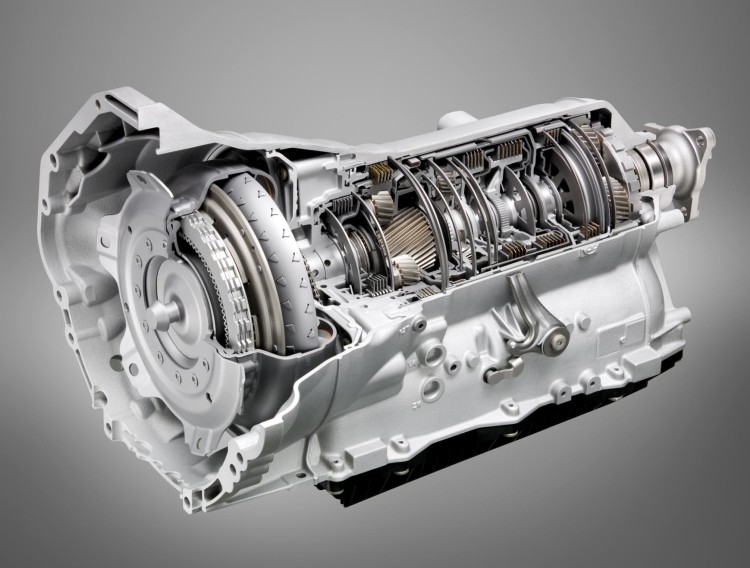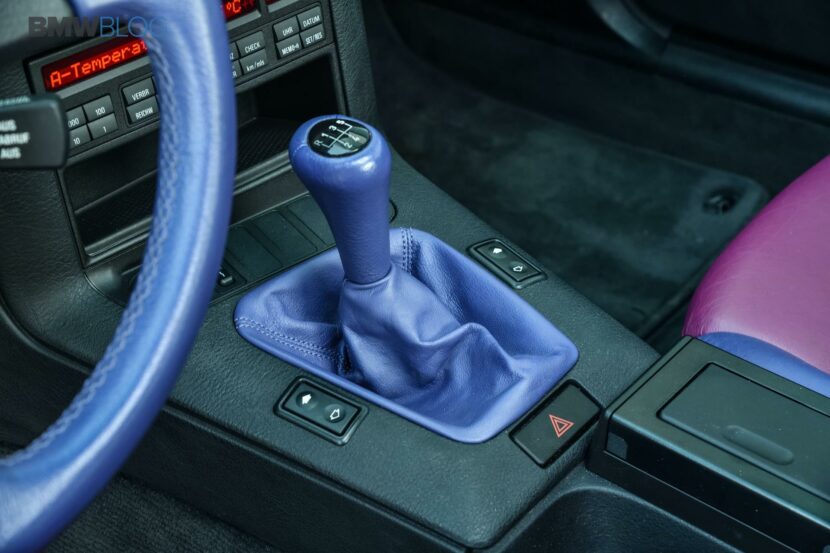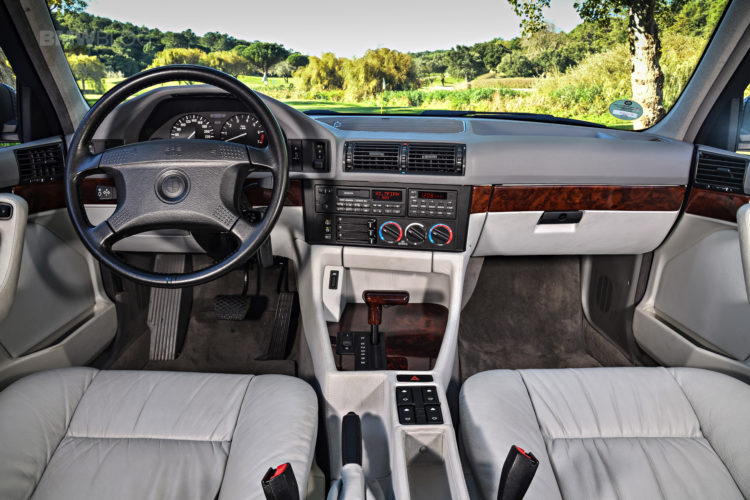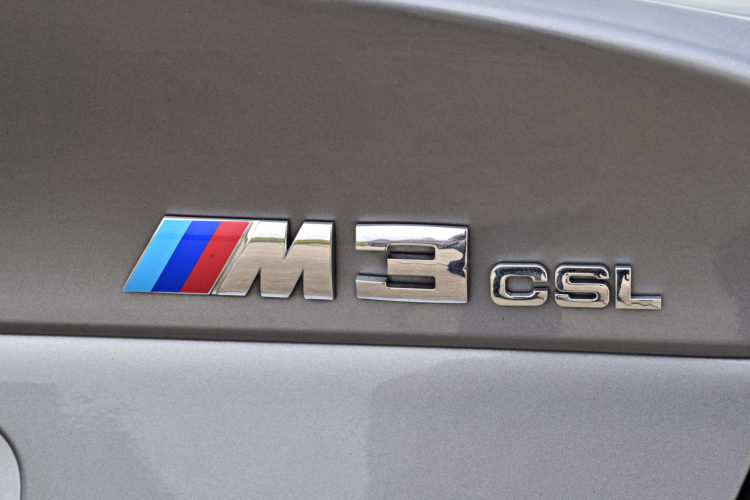In Europe, automatic transmission in a car was something of an expensive indulgence. The ease of town driving was the only saving grace because autos were thirstier than manuals and less reliable. This was when manual gearboxes were almost unbreakable, the dual mass flywheel had yet to be invented, and a clutch job was cheap and took a couple of hours at most. The old 3HP and 4HP three and four-speed units were okayish, but in retrospect, neither was particularly great.
The 1990s 5-Speed ZF Auto
It was probably with the introduction of the five-speed ZF automatic in 1990 that the tables began to turn. The 5HP first saw BMW service in the 24-valve E34 in 1990 and the new E36 320i and 325i in 1991. Four-cylinder cars would use the unremarkable four-speed GM unit. The V8 powered E32 and E34 cars were next in 1992, the 1994 E38 7 Series had it as standard, as did the 1993 840i. The manual override Steptronic system arrived in 1996. In this system, the gear lever is nudged across the standard auto gate into a manual control gate where the lever can be nudged forwards or backwards to manually change or hold a ratio. This was used on the E39 and E38 plus the 8 Series from early 1996 but not the E36—the E46 would, though.
The E65 and its 6-Speed Auto
The all-new E65 7 Series arrived in 2001 with a new generation of six-speed automatics, featuring advanced technology. The gearbox ECU was combined with the valve block in the finned plastic oil pan as a complete unit called ‘mechatronics.’ By 2005, the 6HP was being used in almost everything. Like the previous five-speed auto, the 6HP used Steptronic.
8-Speed ZF
In 2009, the eight-speed ZF 8HP arrived in the F01 760i and was next fitted to the F10 5 Series in 2010, gradually spreading into the entire BMW range. The 8HP has been described—correctly—as not only the best ever automatic transmission that is still unbeaten after 16 years, but the automatic transmission that makes the manual option redundant.
So, when buying a used BMW, is it worth buying an automatic or does a manual gearbox make any sense? It depends on your driving, but an automatic box can transform the most unlikely of cars. I drove a 2007 320i E90 with the N46 engine and the six-speed auto, and far from being a mobile roadblock, the Three drove very nicely indeed with the ZF 6HP complementing the torquey and responsive 2.0 150 bhp four. But if you’ve driven a 1.9 Z3 automatic with the four-speed GM auto, you may have a different opinion!
Manual Transmission – Pros and cons
In the good old days, the ZF or Getrag manual gearboxes, clutches, and flywheels on BMWs were tough and reliable. The first BMW fitted with a dual mass flywheel was the 1986 E32 735i, and apart from the occasional rattle on shut down, you’d never know it had one—they were tough, too. This was used next on the M30 engined E34 from 1988, and the dual mass flywheel was gradually filtered into most manual BMWs by 1998. By 2001 and the introduction of the N42 fours, a DMF was standard. BMW uses the phrase ‘twin mass flywheel,’ and that doesn’t always mean it has a DMF, as it can also mean a solid flywheel but with extra weight for balancing and anti-vibration on cars such as the E36 range.
DMFs started to become less robust when the four-cylinder engines gained a six-speed manual box, as seen with the arrival of the E90. Many BMWs have DMFs that are either rattling by 70,000 miles or juddering on clutch take up. This is caused by wear in the bearings between the inner and outer flywheel sections, and it’s not repairable. A flywheel and clutch change on a 2008 320i, for example, won’t leave you much change from $1000 with a new clutch. Solid flywheel conversions? Hmmm. They’re often not much cheaper, plus the car doesn’t drive as well. The engines were designed with the damping effect of a dual mass flywheel, and the crankshafts and front pulley dampers are ‘tuned’ to run with a DMF.
Manual boxes are generally reliable, but we hear stories about boxes with failed synchromesh or total failure where you cannot engage a gear (forward or reverse) with the engine running. This is not so common on older boxes, but it certainly began in the era of auto stop-start in 2008.
One thing BMW always gets right is the clutch and gearchange as a combined action, but by the time you’re in a 5 Series, the whole changing gear yourself thing is wearing thin.
Automatic Option – Pros and Cons
The five-speed ZF was a huge leap over the previous 4HP in efficiency and reliability. If the 4HP was not as robust as it could have been, the 5HP certainly was. My own record for a 5HP was in a 1993 520i saloon I had 20-plus years ago. That was bought with 242,000 miles on the clock and it drove perfectly, albeit with a slight whine; a new filter and replacing the disgusting black oil with fresh Dexron improved it. Later ones from the E39 and E46 era from 1998 on could be prone to splitting a brake drum when they were changed from cast steel to pressed steel.
The 6HP has proven to be a good unit. They can fail, of course, but it’s the vocal minority you hear from the millions built. Solenoids can go faulty, the rubber bridge seal between the valve block and gearbox casing can start to leak, or the plastic combined oil pan/filter can also leak oil, along with the mechatronics plug seal. You’re looking at about $500 to replace the pan and mechatronics seal and top up with the correct oil.
You may even find that leaving the battery disconnected while this job is done can reset the gearbox settings, resulting in a more responsive transmission. Replacing the bridge seal adds about £150 to the job, and this is not a DIY job without a ramp, so forget doing any of this if your workshop is your driveway. Getting the gearbox oil level correct involves a heat-sensing gun (only 30 or 40 bucks) and it needs to be right.
Should your gearbox fail, forget expensive rebuilds and opt instead for a used box. Replacing the filter/pan as well as the torque converter oil seal is a very good idea before fitting.
The eight-speed is reliable to the point that used boxes are worth very little. For instance, we found a good used F30 320i autobox and converter complete for $200 with a ‘best offer’—yes, really. Elsewhere, there are plenty of eight-speeders for under $500 from big companies, and when a used part is worth so little, that implies little demand because they are so reliable.
The eight-speed ZF’s ECU is coded to the car with ISM (immobilizer), and if a used box is fitted, it won’t work. The ECU ISM code is a bit like the EWS immobilizer in an engine ECU, but a BMW specialist can reprogram the gearbox ECU using the very expensive AutoHex diagnostics in around an hour. The procedure is performed three times to overcome ECU security.
Maintenance? ZF recommends a 100,000-mile oil and filter change, but there are millions of these out there that have done a lot more than that on the original oil. You can either spend $500 plus on an oil change or just have the level checked and leaks rectified as and when. Sure, an oil change before 100k might well improve longevity, but when a good used box is worth so little (particularly the eight-speed), you wonder if it’s actually worth the bother.
What many owners have done is to drain the oil, top up again with fresh oil using a heat gun to get the level correct, and leave it there as a halfway house. Gearbox oil has a much easier life than engine oil. There are no combustion by-products (soot, fuel, acids) to deal with, plus they aren’t running quite so hot.
Verdict
There is little doubt that on the Fxx generation cars, an automatic is going to be the better choice. The eight-speed ZF works so well and gives away nothing in performance or economy, and they rarely go wrong. In one swoop, you’ve left behind boring gear changing as well as expensive flywheel and clutch replacement. Win-win!











































































